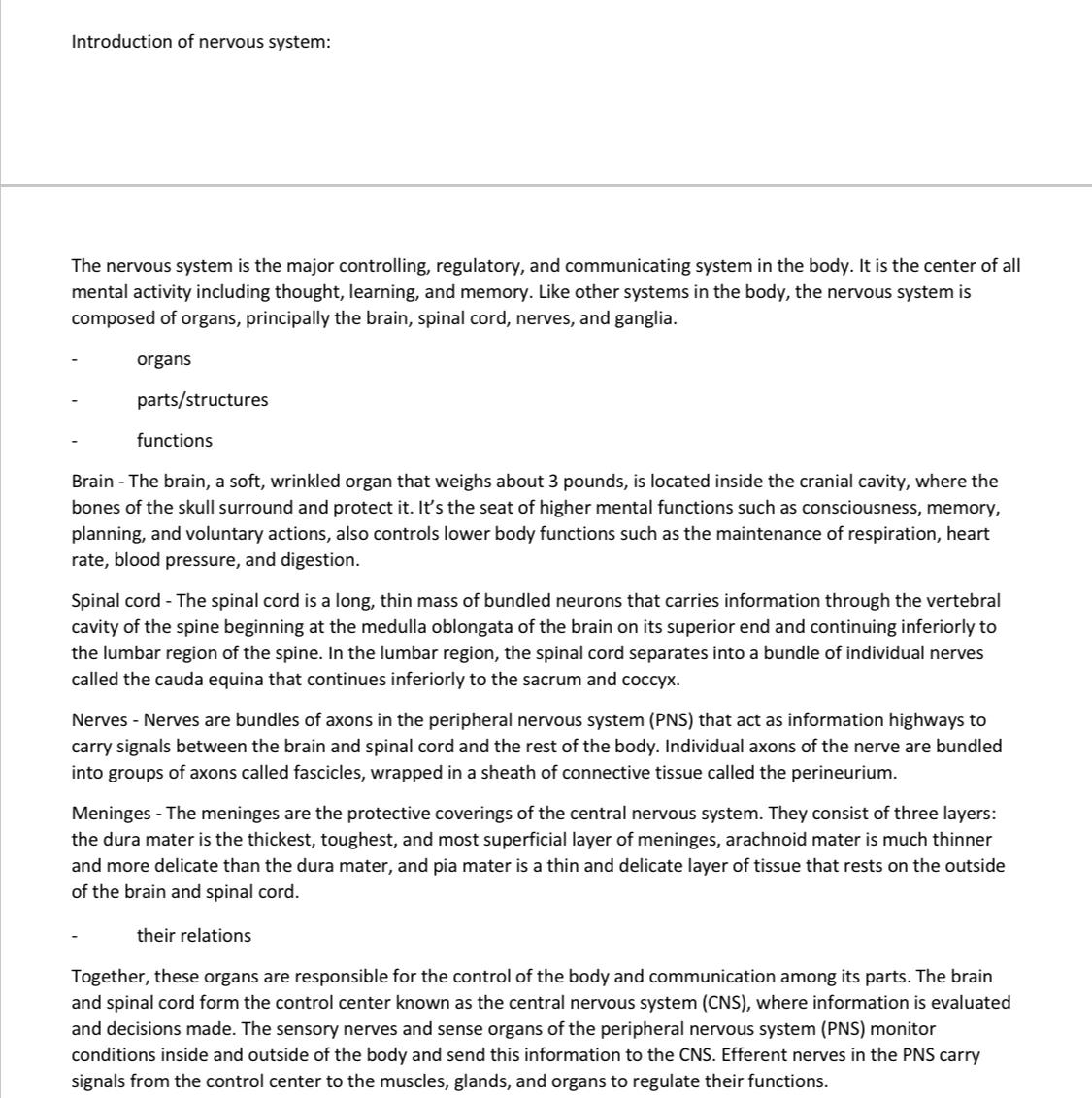The nervous system is the major controlling, regulatory, and communicating system in the body. It is the center of all mental activity including thought, learning, and memory. Like other systems in the body, the nervous system is composed of organs, principally the brain, spinal cord, nerves, and ganglia. organs parts/structures functions Note: Explain and summarize the terms and ideas in the photo attached.

system: The nervous system is the major controlling, regulatory, and communicating system in the body. It is the center of all mental activity including thought, learning, and memory. Like other systems in the body, the nervous system is composed of organs, principally the brain, spinal cord, nerves, and ganglia. organs parts/structures functions Brain – The brain, a soft, wrinkled organ that weighs about 3 pounds, is located inside the cranial cavity, where the bones of the skull surround and protect it. It’s the seat of higher mental functions such as consciousness, memory, planning, and voluntary actions, also controls lower body functions such as the maintenance of respiration, heart rate, blood pressure, and digestion. Spinal cord – The spinal cord is a long, thin mass of bundled neurons that carries information through the vertebral cavity of the spine beginning at the medulla oblongata of the brain on its superior end and continuing inferiorly to the lumbar region of the spine. In the lumbar region, the spinal cord separates into a bundle of individual nerves called the cauda equina that continues inferiorly to the sacrum and coccyx. Nerves – Nerves are bundles of axons in the peripheral nervous system (PNS) that act as information highways to carry signals between the brain and spinal cord and the rest of the body. Individual axons of the nerve are bundled into groups of axons called fascicles, wrapped in a sheath of connective tissue called the perineurium. Meninges – The meninges are the protective coverings of the central nervous system. They consist of three layers: the dura mater is the thickest, toughest, and most superficial layer of meninges, arachnoid mater is much thinner and more delicate than the dura mater, and pia mater is a thin and delicate layer of tissue that rests on the outside of the brain and spinal cord. their relations Together, these organs are responsible for the control of the body and communication among its parts. The brain and spinal cord form the control center known as the central nervous system (CNS), where information is evaluated and decisions made. The sensory nerves and sense organs of the peripheral nervous system (PNS) monitor conditions inside and outside of the body and send this information to the CNS. Efferent nerves in the PNS carry signals from the control center to the muscles, glands, and organs to regulate their functions.
Leave a Reply